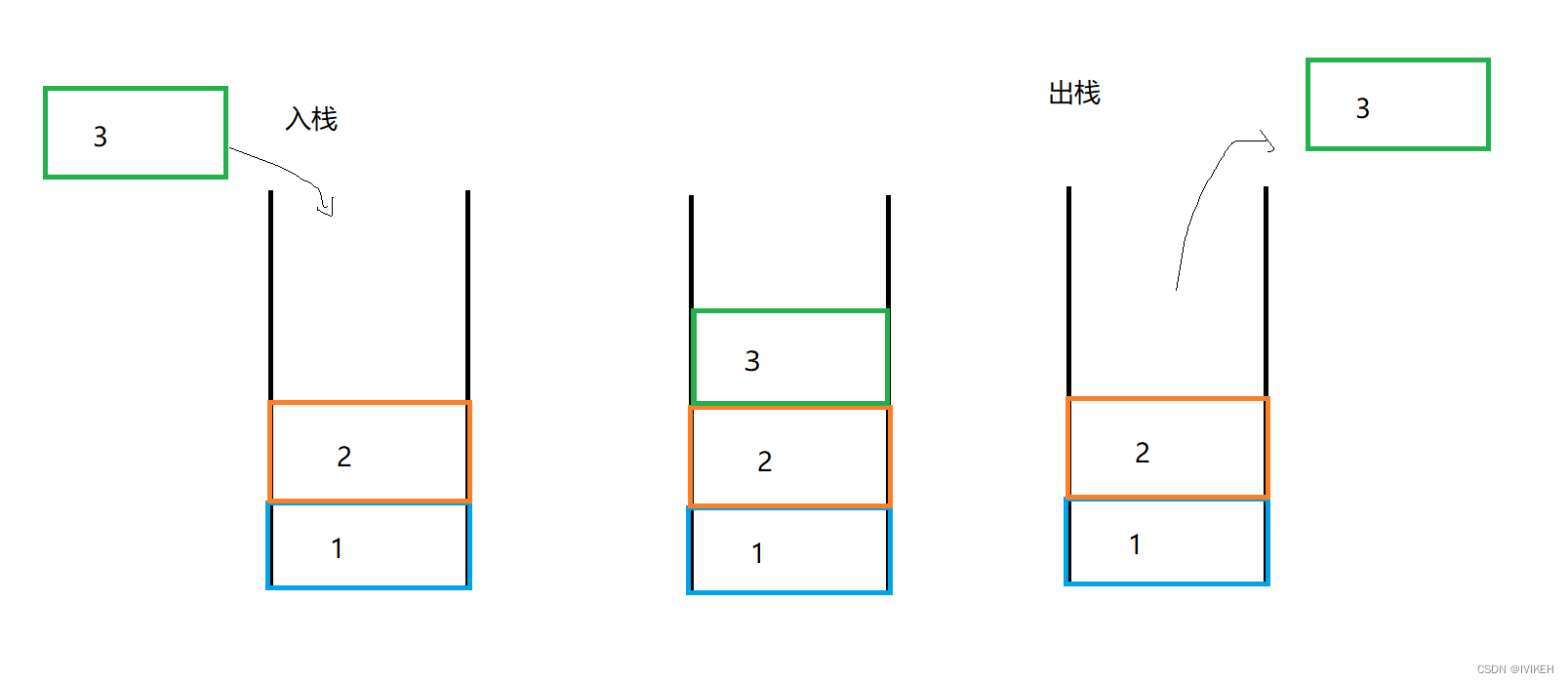一、什么是栈
栈:一种特殊的线性表,其只允许在固定的一端进行插入和删除元素操作。进行数据插入和删除操作的一端称为栈顶,另一端称为栈底。栈中的数据元素遵守后进先出LIFO(Last In First Out)的原则。
压栈:栈的插入操作叫做进栈/压栈/入栈,入数据在栈顶。
出栈:栈的删除操作叫做出栈。出数据也在栈顶。

二、用动态数组实现栈
1、结构体的定义
//动态创建栈
typedef int STDeleType;
typedef struct StackNode
{
STDeleType* a;
int top; //记录栈顶位置
int capacity; //记录当前容量
}ST;2、初始化
这里要注意top的设置,若top设置为0,top位置为下一个元素插入的位置,当top等于0时,栈为空。若top设置为-1时,top位置为栈顶元素位置,当top等于-1时,栈为空。
//初始化
void InitStack(ST* ps)
{
assert(ps);
ps->a = NULL;
ps->capacity = ps->top = 0;
}3、入栈
//入栈
void STPush(ST* ps, STDeleType x)
{
assert(ps);
if (ps->top == ps->capacity)
{
int newcapacity = ps->capacity == 0 ? 4 : ps->capacity * 2;
STDeleType* tmp = realloc(ps->a, sizeof(STDeleType) * newcapacity);
if (tmp == NULL)
{
perror("realloc is fail");
exit(-1);
}
ps->a = tmp;
ps->capacity = newcapacity;
}
ps->a[ps->top] = x;
ps->top++;
}4、出栈
//出栈
void STPop(ST* ps)
{
assert(ps);
assert(ps->top > 0);
ps->top--;
}5、判断栈是否为空
//判断栈是否为空
bool STEmpty(ST* ps)
{
assert(ps);
if (ps->top == 0)
return true;
else
return false;
}6、查看栈顶元素
//查看栈顶元素
STDeleType STGetTop(ST* ps)
{
assert(ps);
assert(ps->top > 0);
return ps->a[ps->top - 1];
}7、销栈
防止内存泄漏
void DestroyStack(ST* ps)
{
assert(ps);
free(ps->a);
ps->capacity = ps->top = 0;
//top设置为0,top的位置为插入元素的位置,插入元素时,先使用,后++
//top设置为-1,top的位置为当前最后一个元素的位置,插入元素时,先++,再插入
}




















 6680
6680











 被折叠的 条评论
为什么被折叠?
被折叠的 条评论
为什么被折叠?








